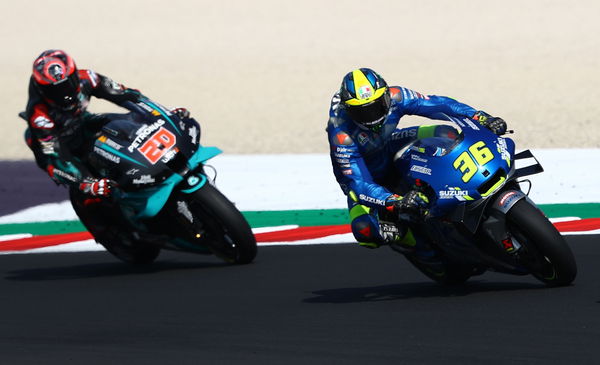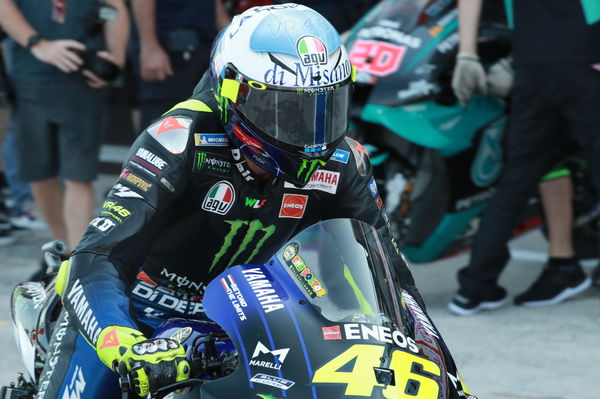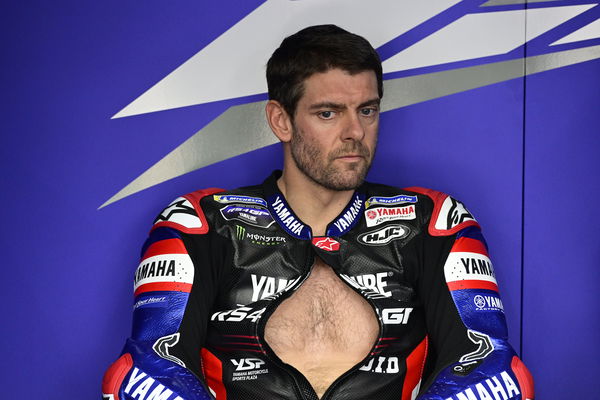14 races, 9 poles, 7 wins… just how did Yamaha lose the 2020 MotoGP title?
Yamaha dominated the 2020 MotoGP season in terms of stats... but won no silverware. How did it drop the ball and kick it into the ocean?

The statistics that form this headline are good… very good in fact. Even if the season was a full 20+ races, any team boss would feel satisfied with that return.
And yet the owner of those digits - Yamaha - will wear what is orindrily a very proud achievement rather more like a heavy stone.
Of course, casting your mind back to the recently-concluded 2020 MotoGP World Championship season it’s easy to imagine a Yamaha out front, the manufacturer gobbling up the lion’s share of poles and wins between a triumvirate among its quartet. And yet, it flopped in all three series’, losing out to Suzuki (riders’) and Ducati (constructors’) despite each nabbing only two wins apiece.
2021 YAMAHA MT-09 - Specs, engine, performance
By all accounts, this was an open goal missed for Yamaha… it didn’t skyrocket it over the bar so much, more showboated and stumbled.
Of course, if you break it down, the fact the wins were spread over three riders alone goes some way to explaining why it didn’t lift the individual crown, but take stock of this stat; Fabio Quartararo had the best stats of any rider with three wins and four pole positions, while he led the way from Round 1 to Round 11 of 14… he’d go on to finish eighth overall in the end.
In fact, it was fairly grim reading all round… and worryingly for Yamaha, it was down to a variety of different reasons too. The Yamaha M1 by all accounts is an excellent bike in the sweet spot, albeit best achieved on sticky rubber chasing a lap time - in other words, in qualifying.
Considered to have the best, or most compliant, chassis on the grid, the M1’s weaponry has been blunted over the years because in race trim it’s advantages are nixed racing in a pack. Passes largely come with a follow, set-up, execution tactic... but if you don’t have the legs to get you alongside, it’s making life harder.
However, it’s also been hampered by rivals pushing the envelope on power (albeit with mixed results if you ask Ducati and Honda), with the riders’ requests-turned-pleas to extract more ponies from the M1 essentially filed in the bin.
A few years ago Yamaha were probably on the right track but in 2020 it saw Suzuki - which usually joins it in propping up the top speed charts - take a notable step forward in that area without sacrificing any of the agility and tyre preservation that made it quick in the first place. In short, Yamaha has resisted working on its engine because it doesn’t think it can without overhauling the chassis too… except, Suzuki has done just that and, well, it is our latest champion.

No blue ticks: Communication issues the problem?
All Yamaha riders - save for Franco Morbidelli, who just rides what he is given - have complained about the lack of performance hampering its efforts, but at the heart of the problem is seemingly a disconnection from engineers in Japan and those that run the bikes in Europe as they have different ideas about what makes a MotoGP machine fast.
It’s hard to argue against Yamaha wanting to centre the operation in Japan - they wield the chequebook and heritage is taken seriously - but especially in 2020, Europe is where the more immediate influence is. Watching rivals week in, week out, seeing where their improvements come from… it’s hard to remember exactly when Yamaha last made a significant change to the M1 in terms of ethos.
Even Rossi for all of his notorious efforts to drive the Yamaha development in his vision has joined the picket line with Maverick Vinales and Fabio Quartararo in calling for more rider input. While there is clearly respect between the team and its riders, the fissure is growing and you have to wonder what Yamaha has to gain by following this track when seven wins (50%) of race wins doesn’t get you particularly close to any titles.
Quartararo (politely… he is only a second year rider after all) suggests this is the case. “I will give my opinion to Yamaha and I hope they will listen to it. I will do anything to help bring this bike to the top . There is good work to be done in the winter. This will be important because we cannot modify the engine, so we will have to work on all areas.”

The elephant in the room named Franco Morbidelli
There is a very particular, slow and methodical manner in the wayh Franco Morbidelli answers questions during press conferences. It’s not because of a language barrier either - because his English is impeccable - but rather the fact he thinks carefully about his responses.
Though he’s not biting the hand that feeds him so much, read between his drawn out lines and there is a sense he feels vindicated by emerging as the firm’s leading contender having been prevented from upgrading to the latest spec machinery for 2020 in favour of 2019. However, it does raise the question over whether this was Morbidelli’s time to shine or the disparity between the two M1s is vaster than we thought. In reality, it’ll be a bit of both.
Perhaps most alarming thing about the 2020 M1 is that it wasn’t exactly slow out of the box - winning the opening two rounds and getting pole in three of the opening five - but seemed to unusually go backwards in development. Indeed, this usually happens the other way around.
While the circumstances in 2020 have been unusual, Yamaha is well equipped to handle those rigours but the way the M1 collapsed in race conditions with its tyres is the stuff of nightmares because finishing down the order from around 10th on the grid is one thing but doing so from the front row is worse.
You can almost hear Maverick Vinales’ shouting ‘see, it’s not just me going backwards on race day!’
While Morbidelli is correct in saying he’d rather have a current spec M1 rather than a year-old one in 2021 because there ‘sfar more development potential in it once it goes the right direction, for now it means Yamaha has the awkward situation of its three factory riders - Quartararo and Rossi swapped over - not having the better option available to them next year.
Which takes me back to my original point, if Yamaha can win seven races from 14 grands prix without winning a single title, this should be a wake up call that something has to change.
Or it’ll face rivals taking one step back for two, three or more steps forward in time, while Yamaha grapples with shuffling forward slowly by refining tiny margins.
Yamaha may know most, but it may not know best...
![Marc Marquez - Repsol Honda [1200]](https://cdn.visordown.com/field/image/847280%20%281%29.jpg?width=600)










